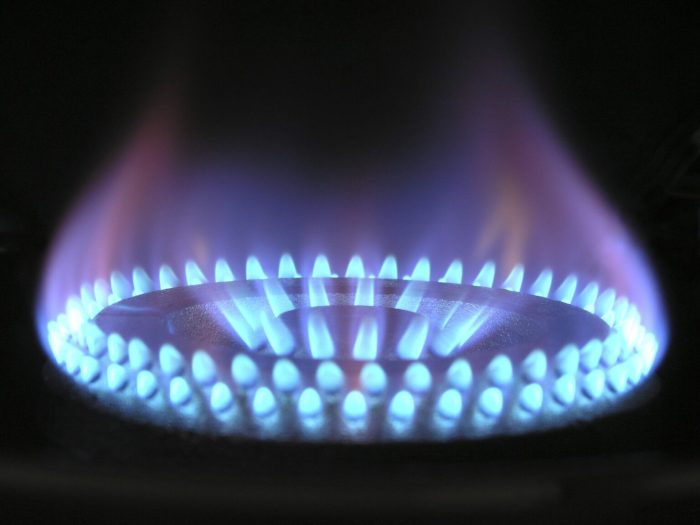Burning one cubic foot of propane will produce approximately 2,500 British Thermal Units (BTUs), making it an efficient and versatile fuel source. This article explores the chemical reaction and energy release involved in propane combustion, examining factors affecting energy output and efficiency.
We will also discuss the environmental implications and safety considerations associated with propane use, highlighting its diverse applications and advantages over other fossil fuels.
Propane combustion involves a chemical reaction between propane (C3H8) and oxygen (O2), releasing heat energy. The amount of energy produced is determined by the complete combustion of propane, resulting in the formation of carbon dioxide (CO2) and water (H2O). The efficiency of propane combustion can vary depending on factors such as combustion equipment, air-to-fuel ratio, and environmental conditions.
Chemical Reaction and Energy Release: Burning One Cubic Foot Of Propane Will Produce Approximately
When propane is burned, it undergoes a chemical reaction with oxygen to produce carbon dioxide and water vapor. The chemical equation for this reaction is:
C3H 8+ 5O 2→ 3CO 2+ 4H 2O
This reaction releases a significant amount of energy, which is why propane is used as a fuel. The amount of energy released can be calculated using the following formula:
Energy released = mass of propane burned × heat of combustion of propane
The heat of combustion of propane is 22.2 MJ/kg.
Factors Affecting Energy Output

Several factors can affect the energy output of burning propane. These factors include:
- The type of propane burner:Different types of propane burners have different efficiencies, which can affect the amount of energy that is released.
- The air-to-fuel ratio:The air-to-fuel ratio is the ratio of air to propane in the combustion mixture. A proper air-to-fuel ratio is necessary for efficient combustion.
- The temperature of the combustion chamber:The temperature of the combustion chamber can affect the rate of combustion and the amount of energy that is released.
Efficiency of Propane Combustion

Propane combustion is a relatively efficient process. The efficiency of propane combustion is typically around 80-90%. This means that 80-90% of the energy in the propane is converted into usable energy.
The efficiency of propane combustion can be affected by several factors, including:
- The type of propane burner:Different types of propane burners have different efficiencies, which can affect the amount of energy that is released.
- The air-to-fuel ratio:The air-to-fuel ratio is the ratio of air to propane in the combustion mixture. A proper air-to-fuel ratio is necessary for efficient combustion.
- The temperature of the combustion chamber:The temperature of the combustion chamber can affect the rate of combustion and the amount of energy that is released.
Environmental Considerations

Burning propane has several environmental implications. These implications include:
- Greenhouse gas emissions:Propane is a greenhouse gas, and burning propane releases carbon dioxide into the atmosphere. Carbon dioxide is a major contributor to climate change.
- Air pollution:Burning propane can also release other air pollutants, such as nitrogen oxides and particulate matter. These pollutants can contribute to smog and other air quality problems.
Applications and Uses of Propane

Propane is used in a variety of applications, including:
- Heating:Propane is used to heat homes and businesses. It is a clean-burning fuel that is relatively inexpensive.
- Cooking:Propane is used to cook food. It is a portable fuel that can be used for grilling, camping, and other outdoor activities.
- Transportation:Propane is used to fuel vehicles. It is a clean-burning fuel that is less expensive than gasoline.
Safety Considerations
Propane is a flammable gas, so it is important to take safety precautions when handling and burning it. These precautions include:
- Store propane in a well-ventilated area:Propane is heavier than air, so it can accumulate in low-lying areas. It is important to store propane in a well-ventilated area to prevent the buildup of gas.
- Never smoke or use open flames near propane:Propane is a flammable gas, so it is important to never smoke or use open flames near it.
- Inspect propane appliances regularly:Propane appliances should be inspected regularly to ensure that they are in good working order. This will help to prevent leaks and other safety hazards.
Answers to Common Questions
What is the chemical reaction involved in propane combustion?
Propane (C3H8) reacts with oxygen (O2) to produce carbon dioxide (CO2) and water (H2O), releasing heat energy.
How much energy is released when burning one cubic foot of propane?
Approximately 2,500 British Thermal Units (BTUs).
What factors can affect the efficiency of propane combustion?
Combustion equipment, air-to-fuel ratio, and environmental conditions.
What are the environmental implications of burning propane?
Propane combustion releases carbon dioxide and water vapor, contributing to greenhouse gas emissions.
What safety precautions should be taken when handling and burning propane?
Proper ventilation, leak detection, and adherence to safety regulations are essential to mitigate potential hazards.